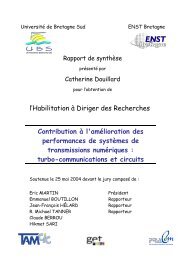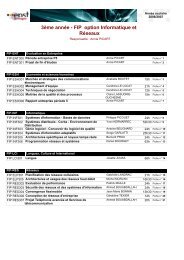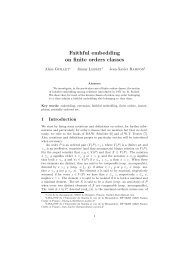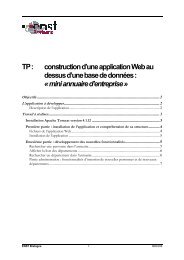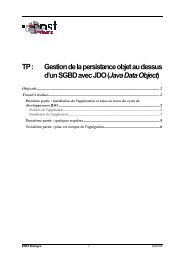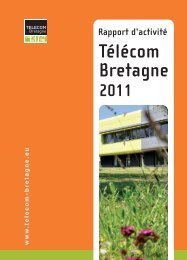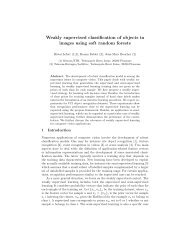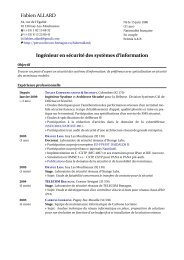researResearch - Télécom Bretagne
researResearch - Télécom Bretagne
researResearch - Télécom Bretagne
Create successful ePaper yourself
Turn your PDF publications into a flip-book with our unique Google optimized e-Paper software.
esearc<br />
<strong>researResearch</strong><br />
IEM<br />
Interpretation for marine environments<br />
Aims and objectives throughout the project<br />
Project Leader :<br />
Didier Guériot<br />
and<br />
Christophe Sintes<br />
Department:<br />
• Image and Information<br />
Processing<br />
• Signal and communications<br />
Project team:<br />
Thierry Chonavel,<br />
Didier Guériot,<br />
Jean-Marc Le Caillec,<br />
Grégoire Mercier,<br />
Christophe Sintes,<br />
Gérard Llort Pujol,<br />
Xavier Lurton (IFRE MER),<br />
Thierry Schmit (CIDCO),<br />
Benoît Zerr (GESMA).<br />
Up until the 1980s, seabed exploration was limited by the speed and precision<br />
of sensors. Recent technological innovations make it possible to imagine<br />
access to centimetre-level information in frequencies ranging from 10kHz to<br />
500 kHz. The IEM project is concerned with the totality of processing, from<br />
the sensor level up to the representation of an underwater scene and the<br />
simulation of acoustic signals.<br />
Our current research is concerned specifically with sensor processing (or<br />
antenna processing) and simulation.<br />
The difficulties associated with sensor processing concern the reduction of<br />
noise level on (side scan or multi-faceted) interferometers by methods relying<br />
on wave front modelling and on more extensive antenna use. The idea is to<br />
proceed, by multifaceted interferometry, to the analysis of the phase statistics<br />
and to performance production, to finalize the extraction of high resolution<br />
relief, and to reduce noise level by auto-calibration of the antenna. Because<br />
we are using side scan sonar interferometry, the next step is interferometry<br />
and image fusion (bathymetry improvement) based on Kalman regularization.<br />
Concerning simulation, the goal is to fusion together exact methods and rays<br />
methods. Thanks to the installation of a new core based on energetic tube<br />
launching. We also must handle the issue of bi-statism, as well as the passage<br />
to dynamic charging of DTMs (Digital Terrain Models).<br />
136



